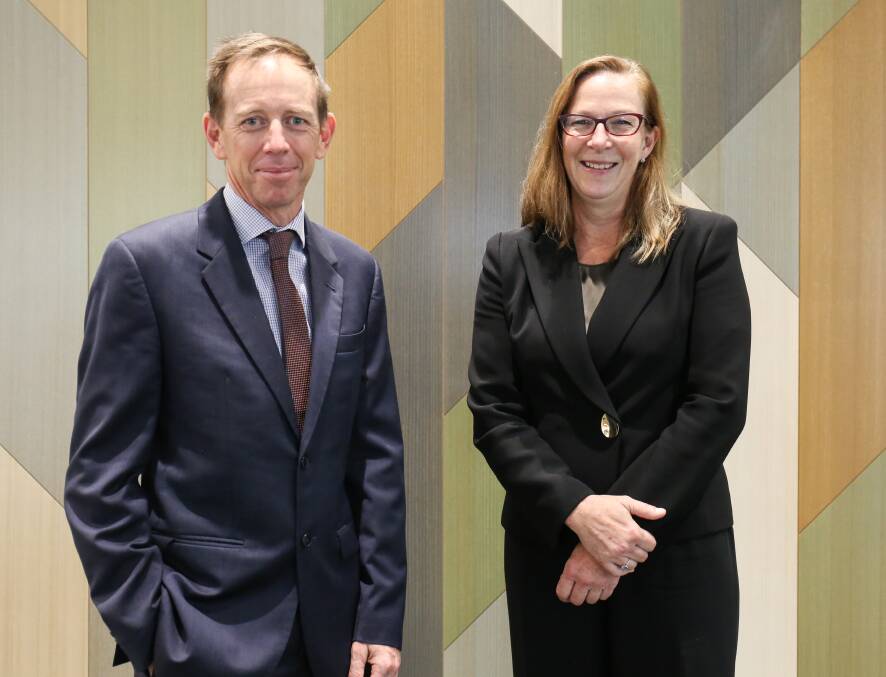
The community would be worse off if one of the ACT's therapeutic courts does not receive "immediate injection" of funds to reverse its hiatus and to re-prioritise rehabilitation because it costs more to have an offender in jail, a former ACT Bar Association president says as the territory's prisoner costs remain the highest in the country.
John Purnell SC, the former president, is calling for more resources for the ACT Supreme Court's Drug and Alcohol Sentencing List, established in 2019, after it stopped accepting new referrals.
Eligible offenders may participate in that list where intensive treatment programs, overseen by a judge, rather than full-time jail terms are imposed on them.
The pause, until further notice, came into effect in February when the list became full.
In April when one of Mr Purnell's clients pleaded guilty to aggravated robbery, the barrister raised the possibility of the sentencing option but told presiding judge Justice Chrissa Loukas-Karlsson about the issue.
"Apparently the system is that one can't even be assessed now because there's no money to do that," he said.
"We can't have the situation where the court's hands are tied in terms of options.
"It's more expensive to keep somebody [eligible for the sentencing list] at the Alexander Maconochie Centre ... by a long shot."
Justice Loukas-Karlsson said "it is no good for the community".
"Because if people can be rehabilitated through the drug court system then ultimately the community benefits rather than recidivism continuing," she said.
The judge said that option for Mr Purnell's client should be explored also because the prosecution did not make submissions against that possibility.
"Everybody knows the benefits of rehabilitation. There's good research around that," Justice Loukas-Karlsson said.
"Rather than overcrowding our prison system, if we can deal with offenders in a way that's more effective - for both offender and the community - then we must explore those options."
Following the court session, Mr Purnell said the government's effort in addressing recidivism was commendable, but it could "do more by giving more money to the drug court".
"Judges have to look at other sentencing options - that's the tragedy of it all," he said.
Mr Purnell said in addition to offenders being denied "a real prospect at rehabilitation", another implication is that they may suffer extra-curial punishment.
In an email to the ACT Attorney-General, Shane Rattenbury, Mr Purnell asked the government to "urgently remedy this limitation in sentencing options by organising the immediate injection of sufficient funds".
He said the therapeutic sentencing option was "particularly relevant for First Nations people as both you and Chief Justice [Lucy] McCallum are interested in improving the appalling incarceration rates for our First Nations people".
Territory's prisoner costs remain nation's highest
The cost per prisoner per day in the ACT remains the highest based on the latest Productivity Commission data.
When calculating based on operating expenses and capital costs, the territory's figure is $528 in 2020-21 compared with the national figure of $375.
However, that latest ACT figure is down from $559 in the previous year.
The territory's cost when calculating based on real net operating expenditure - where revenue is deducted from the costs of delivering corrective services and excluding capital costs - is also the highest.
Its average for that calculation methodology during the four years to 2020-21 is the highest at $369 followed by Victoria at $344.
As of last Friday, 35 people were on drug and alcohol treatment orders with 62 orders imposed since the court's inception.
Cost data for the participants has been requested.
It is understood costs vary due to factors such as the length of an order; whether the treatment is community based or residential; and, how many services an individual may be engaging in.
The government has so far committed about $20 million to the court, including $6.83 million in 2018-19 for about 2.5 years for up to 30 treatment orders at any given time.
In the 2021-22 budget, another $13.2 million was committed until 2022-23.
Likely candidate for drug court intervention sent to jail
Associate Justice Verity McWilliam in early May had to resort to a jail sentence of nearly four years for an offender for whom she said was clear that his drug and alcohol abuse and other disadvantaged factors led to his offending behaviour.
"He has frequently been before the courts and his current desire to treat his addictions have been unsuccessful to date," associate Justice McWilliam said.
She said if it were not for the list being full, he would "likely have been an appropriate candidate for such an intervention".
The judge crafted the sentence to have a non-parole period towards the lower end of the usual range to allow the offender "the greatest opportunity" to pursue his own rehabilitation with the benefit of supervision.
Capacity shows 'successful implementation'
In response to questions about the issue, Mr Rattenbury said the government was aware of it and was committed to its policy of "building communities, not prisons".
"The fact that we are fully utilising the program's capacity shows the successful implementation of this new court over the last two years," Mr Rattenbury said.
"As participants complete their orders, new spaces will become available."
Mr Rattenbury said an evaluation of the court was being conducted to help with decisions about its future, including its size and funding.

Similarly, ACT Chief Justice Lucy McCallum said the program at capacity "is a measure of its successful implementation".
"The success of the program requires the deployment of significant and diverse services to address complex criminogenic problems," she said.
"It must be recognised that the building of such capabilities takes time."
The Drug and Alcohol Sentencing List is a commitment of the 2016 Parliamentary Agreement between the ACT Greens and Labor.
It forms part of the government's goal to reduce recidivism by 25 per cent, equivalent to a reduction of 146 detainees returning to custody, by 2025.
The Australian Bureau of Statistics states that in the 12 months to June 2021, the ACT's total prisoners decreased by 70 to 379 and it was the third successive year it went down.
As of May 14, an updated notice about the sentencing list has not been issued to practitioners.







